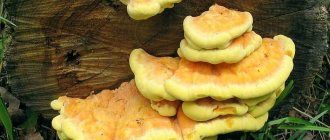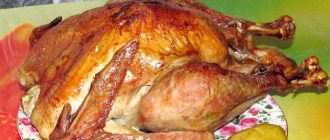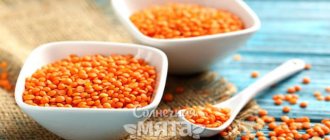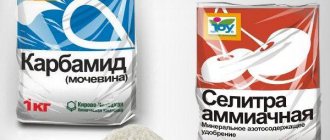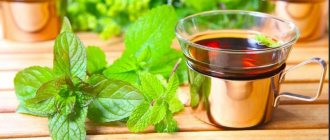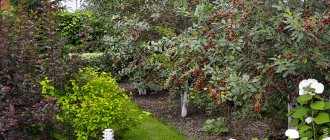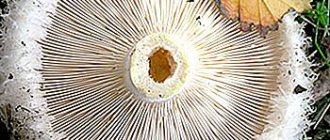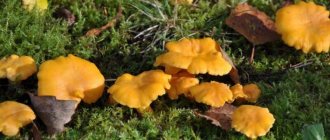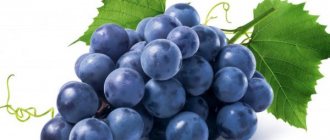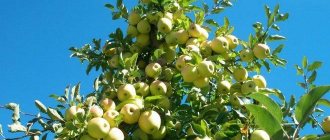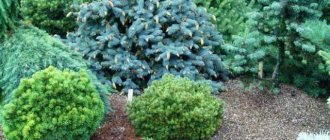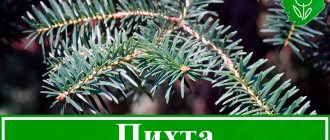What are the similarities between spruce and fir
In the wild, fir and spruce can be part of mixed forests, for example, in the North Caucasus. These are evergreen trees with common characteristics:
- long-term life cycle;
- tall (30–70 m);
- Spruce and fir have spreading branches. The lower ones are located close to the soil surface and grow at right angles. For each subsequent circle, the angle of growth relative to the trunk decreases;
- cone-shaped crown;
- presence of needles.
Wood of these types is used in industry and construction. Trees are used for landscaping.
Main Differences
Evergreen coniferous trees are very similar in appearance, but they have quite a lot of differences. First of all, you should take into account that they grow in different natural zones.
Spruce is a more frost-resistant type of coniferous tree , more common in the northern hemisphere, often growing as a dense forest or as part of a mixed forest. It can grow up to 40 meters up and reaches no more than 2 meters in width, which is why most often they are easily blown away by strong gusts of wind.
Fir, on the other hand, is not so frost-resistant, so it grows mainly in the Caucasus , in the southern part of Siberia, and is also common in the Primorsky Territory. It grows up to 60 meters in height, the first decade of growth is minimal - about 10 cm per year. At the same time, it is very sensitive to climate and the amount of moisture in the soil. The crown is shaped like a pyramid, the trunk is straight and smooth.
What is the difference between spruce and fir
Upon closer examination, the species differ in many respects. Trees have different frost resistance, so the main accumulation is observed in different climatic zones. The requirements for soil composition and growing conditions are also different. The differences between spruce and fir branches and cones are shown in the photo.
The scales of the Christmas tree open, the seeds fall off, and the cones remain intact.
In fir, the infructescence disintegrates after ripening, leaving only the stem
What do fir and spruce look like?
The crown structure of the species is the same, but the shape is slightly different.
In fir, the length of the branches does not extend beyond the visual boundaries. The shape is correct and symmetrical. The crown is dense, without gaps, the trunk and branches are not visible. Height up to 70 m.
The spruce crown is sparse, the trunk is visible. The length of the branches on the north side is shorter, this feature makes the shape of the tree asymmetrical. Height – 30 m.
Important! Fir can be unmistakably identified by its distinct coniferous smell and cones growing upward.
Comparative characteristics of the species are presented in the table.
| Crown elements | Spruce | Fir |
| Branches | Sparse, with gaps, shorter on one side, voluminous, lumpy where the needles grow | Dense, flat, equal length, fastening needles without protrusions |
| Bark | Brown with a reddish tint, flaking, with cracks of different lengths and directions | Gray, smooth, solid, with resin tubercles on the surface |
| Needles | Tetrahedral, light green, plain. The direction of growth is arbitrary. The needles are sharp, hard, prickly, up to 3 cm long | Flat, thin near the branches, soft. The needles expand upward. The terminal part is slightly forked, without a point. The needles are located horizontally and grow in a spiral. Length – 4 cm, color bright green with light stripes along the edge |
| Cones | They have the shape of an elongated cone, brown. Formed at the end of branches. Located top down. After ripening they do not lose their shape. | Round, pale green, growing at the crown of the tree. Located vertically upward. After ripening, the scales peel off and fall off. Sticky from secreted resin |
| Seeds | Ovoid. Regularly shaped wing, dark brown | Wedge-shaped. With asymmetrical beige wing |
The differences between a Christmas tree and a fir (pictured) are in the color and structure of the cones, their location, as well as the shape and length of the needles.
The easiest way to recognize a fir is by its cones, reminiscent of cedar
Differences between fir and spruce in their growing area
Spruce is a forest-forming species with a wide distribution area. It grows in pure plantings in the northern part of Europe. In Russia, it is part of the mixed coniferous tracts of Siberia, forms spruce forests in the taiga of the Far East, and is adjacent to pine in the Black Earth Zone. In the southern part it is found among deciduous trees.
Fir grows in mixed forests. The main distribution is Primorsky Krai. The species is widespread in the mountainous regions of the North Caucasus (in the protected area). Less common in the Far East. It is part of the coniferous forests of Southern Siberia.
Needles and cones
Spruce needles are arranged spirally around the branch, the length can reach 2.5 centimeters, the needles have a tetrahedral shape. If you clear a branch of needles, you can see the tuberous surface of the shoot. Adherents of a “live” Christmas tree for the New Year holidays know very well how prickly the needles of the tree are. Spruce cones grow at the ends of branches and are ovoid in shape.
Fir needles are long, up to 4.5 cm, flat, dark green with two white stripes, narrowed at the base. Its main property, which distinguishes it from other conifers, is softness and lack of causticity. The cones of fir trees are also quite remarkable: they grow at the very top of the tree and are directed not downwards, but upwards.
The difference between a Christmas tree and a fir for the New Year
When buying a tree, first of all, pay attention to the appearance of the crown. They take into account the temperature conditions under which the ephedra will stand.
Important! If there are small children in the family, then it is better to give preference to fir wood, because it does not splinter.
The choice of fir or spruce for the New Year also depends on the decor. These crops have crowns of varying densities. If there are a lot of decorations and they completely cover the branches, you can take a regular Christmas tree.
Fir's natural form is highly decorative, thick and lush, so you will need a minimum of toys and tinsel
Important! The price offer for the species is different: spruce is much cheaper.
What costs longer: Christmas tree or fir
On an unheated veranda or on the street, both types will last the same. In a warm room, the difference between fir and Christmas tree in the duration of maintaining an aesthetic appearance is significant. In the room, spruce requires special conditions; it is placed away from heating devices in a container with wet sand. Even with constant moisture, the tree will last no more than a week, then the needles will completely fall off.
Fir conifers do not need a base of wet sand; an ordinary stand is sufficient. The needles dry over time, but do not fall off. The tree will retain its decorative appearance for about a month (at any above-zero temperature). This quality distinguishes fir from the Christmas tree.
What smells stronger: spruce or fir?
The structure of wood varies among species. It differs in the location of the resin channels. In fir, the enzyme accumulates on the surface. Therefore, when a tree is brought from the street into a warm place, a pronounced pine smell immediately spreads. It is stored for at least five days.
Spruce does not release the enzyme onto the surface of the crown; it is located in the inner part of the wood. After a sharp change in temperature, the needles smell, but weakly, the smell lasts no more than 24 hours.
What is better in design: Christmas tree or fir
Wild species are used only for landscaping park areas; varietal crops are used in ornamental gardening. The choice depends on the growing climate zone and location. The versatility of cultivars in design is the same.
Advantages of fir:
- more thermophilic;
- survival rate is high;
- the crown does not require formation;
- tolerate drought more easily.
Flaws:
- not adapted to air pollution;
- don't like shade;
- weak growth.
Spruce also has its advantages:
- fast growth;
- low maintenance requirements;
- high frost resistance;
- good adaptability to the polluted environment of megacities.
The disadvantages include:
- the need for crown correction;
- poor rooting of seedlings.
Different types of conifers are often used to create compositions.
Which is better to choose?
Spruce or fir? If such a question arises before the New Year celebration, then we can say with confidence that it is better to choose the first option, because this tree gives a richer aroma that does not evaporate for a long time.
If you choose a perennial plant for other purposes, such as construction, you need to consider what exactly it will be used for. It should be noted that in the construction market, spruce is more expensive than fir.
It is used not only to build houses - it is also used to make musical instruments, such as violins.
Spruce is also actively used in the pulp industry; in this area it is quite popular because the color of its trunk is white.
Fir wood is also used in this same area, but less frequently. In the construction industry, it is not valued very highly, as it is very brittle and fragile. But due to its property of not transmitting any foreign odors to food, fir is widely used for making storage barrels.
In medicine, fir is valued for its beneficial qualities, especially for its oil, which helps cure various diseases.
If you choose a tree to plant on your site, then you should start from the area in which you live, because one species tolerates frost better than the other, as mentioned earlier.
You also need to take into account that it is more difficult to plant a Christmas tree due to the fact that it is very prickly. In this case, it is imperative to use protective equipment for various parts of the body.
When choosing a plant, you need, in addition to the basic criteria, to rely on your own preferences and the characteristics of the existing landscape. There are times when one of the trees may not fit into the overall design concept of the site. In addition, if you have small children living with you, it is preferable to choose fir varieties for planting, since their needles are not particularly sharp.
In this case, it is better to place spruce trees in remote corners of the garden.
It should be noted that these types of trees have many different varieties and species, which also differ in shades of needles, length and other features.
What is the difference between spruce and fir in cultivation?
Plants belong to the same genus, but their biological requirements and agricultural technology are different.
| Growing | Fir | Spruce |
| Landing location | Sunny, dry | Partial shade, moist conditions are allowed |
| Priming | Light, neutral, fertile | Soil composition is not critical |
| Saplings | Any root system | Closed only |
| Top dressing | During the planting season and subsequent warm periods | From the third year |
| Watering | Periodic | Regular |
| Molding | Need not | Required |
Sheltering young plants for the winter in a temperate climate is a mandatory procedure for both species. Mature spruce is distinguished by the fact that it does not need insulation.
Biological description of childbirth
The genus Fir is a tall, evergreen tree. The plant belongs to the Pine plant family and is forest-forming in the wild. The tree is tall, reaching a maximum height of 80 m, the width of its crown is up to 3.5 m.
The Spruce genus is a representative of coniferous evergreen crops, which, like fir, belong to the Pine family. The tree is tall, capable of reaching up to 90 m in height.
What is the difference between fir and Christmas tree in terms of application?
You can distinguish spruce from fir (pictured) by the color and texture of the lumber.
Light-colored spruce wood with fine textured lines, silky gloss, dense, durable
Fir material is soft, fragile, has a gray tint, coarse texture, and rough surface
The range of uses for the Christmas tree is quite wide, the wood is more valuable. The type is used in the following areas:
- medicine;
- construction;
- carpentry, for making furniture, musical instruments;
- pulp and paper industry;
- leather production, as a tanning enzyme.
Fir wood differs from spruce wood in its low value; it is practically not used in construction. They make containers, paper, and use them in medicine.
Application
There are no particular differences in the economic and decorative uses of the trees described. Both species are grown as decoration for suburban areas and parks. Depending on the cultivated variety, the plants look great in flower beds or as hedges.
Spruce wood is used only for interior construction work, since upon contact with the ground it begins to rot and disintegrate. High-quality wood material from this tree is used to make stringed instruments.
The specific heat of combustion of spruce firewood is 4.5 kWh/kg, so this material is excellent for heating residential premises. Also, the residues from the processing of spruce wood are used for thermal and power plants that run on biofuels.
The fir trunk lends itself well to processing, the wood is elastic and light. It is mostly used for cladding purposes, and is also perfect for making food containers. Oil and camphor can be made from the needles of this plant. Fir balsam can be extracted from the swellings of the bark of this plant; it is used to prepare turpentine, varnish and rosin.
When and how to use fertilizers?
After the plant takes root well, and this will happen in 2-3 years, you can begin to fertilize it. Fir is an evergreen plant; it does not require rapid replenishment of nutrients like deciduous trees. Therefore, it does not need a lot of fertilizer.
The best fertilizer for conifers (including fir) is to add good humus or compost to the tree trunk circle. How to do it? Lightly loosen the soil, add fertilizer and mix it with the soil. You just need to be careful when doing this, since the root system of fir is shallow, so you should add fertilizer only to the very surface of the soil.
The following mineral fertilizers are suitable for fir: 30-40 grams of nitroammophoska per square meter of tree trunk circle. Fertilizing is applied once a year, in spring or at the very beginning of autumn. Under no circumstances should you fertilize the soil for fir in late autumn. This can provoke the growth of new shoots, which will not have time to ripen and will suffer in the winter and become frozen.
Types, forms, characteristics
Figure 2. Types of coniferous trees.
If the main differences between pine and spruce are obvious, then it is much more difficult to determine the difference between the species of each genus.
Types of fir trees:
- common European;
- spiny silver;
- Serbian;
- gray Canadian.
| View | Crown | Needles | Coloring |
| common European | horizontal or drooping, freely branched | flattened, hard, tetrahedral 1-3 cm | green, dark green |
| spiny silver | cone-shaped, symmetrically pyramidal, slender with dense branching | needle-shaped, tetrahedral, pointed, 3 cm | gray-blue with a pronounced silver plating effect |
| Serbian dwarf | conical, narrow pyramidal, spherical, branches directed upward | short, evenly distributed, 1-2 cm | green, bright green |
| gray Canadian | very thick, dense, regular conical shape | hard, densely distributed, short, needle-shaped, 1-1.8 cm | deep green with silver spray effect |
READ MORE: Sound amplifiers for home acoustics
Types of pine trees:
- ordinary;
- Weymouth pine;
- white-barked dwarf;
- Banks pine;
- flexible tortuous;
- heavy, yellow pine;
- twisted;
- Japanese white.
Scots pine is most often used as a tree for New Year and Christmas holidays.
How to plant fir correctly?
Like all conifers, the fir tree (the photo and description of which became the subject of our review) is an unpretentious plant. However, certain features and rules when planting and caring for this tree must be known.
When planting, it is better to take a container crop, since such plants can be planted almost all year round. They take root well in spring, summer, and even autumn. The only time it is not recommended to plant plants is during severe frosts in frozen ground.
